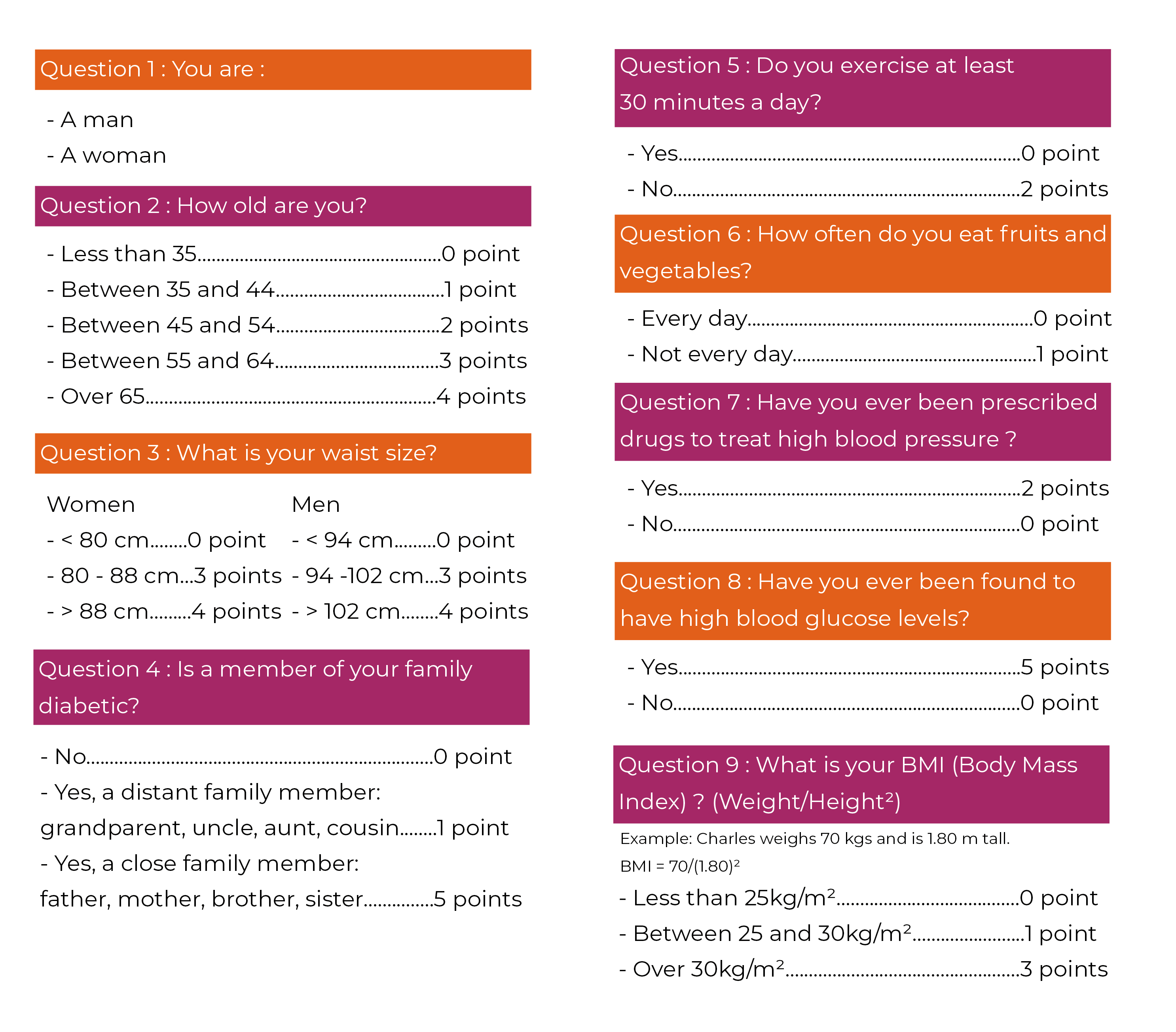Diabetes #2 : assessing and understanding the risk factors
By 2045, the number of diabetics in the world is expected to increase sharply. It is therefore essential to assess one's risk of diabetes, to understand the different risk factors of this disease but also to know its common symptoms.

Posted on
I. Assessing and understanding the risk factors for type 2 diabetes
By 2045, the number of diabetics in the world is expected to increase sharply. However, it is estimated that half of these patients will remain undiagnosed [1]. Yet, early detection of type 2 diabetes can significantly reduce the risk of complications associated with the disease. It is therefore essential to assess one’s risk of diabetes, to understand the different risk factors of this disease but also to know its common symptoms.
Assessing the risk of having type 2 diabetes
We invite you to take a short test that will allow you to evaluate your risk of becoming diabetic in the next 10 years.
Please note that this form does not replace a medical opinion and does not constitute a diagnosis. To get a diagnosis, please see your physician.

Results :
The FINDRISC score was established by the Finnish Diabetes Association (FINnish Diabetes RIsk SCore). Its use is recommended by the High Authority of Health to identify subjects at risk of diabetes. The use of this score is also recommended by the European Society of Cardiology and the International Diabetes Federation
Less than 7 points………………………..1%
You have little or no risk of becoming diabetic.
Between 7 and 11 points………………………………4%
Some caution is in order, especially by watching your diet and doing regular physical activity.
Between 12 and 14 points……………………………17%
You are at risk of becoming diabetic within the next 10 years. Implement hygienic and dietary measures by losing weight, practicing 30 minutes of physical activity per day and rebalancing your diet. If you need help doing it, consult your physician.
Between 15 and 20 points……………………………33%
You have a very high chance of developing type 2 diabetes in the next few years. Don’t underestimate the situation, talk about it to your physician.
More than 20 points…………………………………50%
You are at high risk of becoming diabetic, or you already are without knowing it! Contact your physician, because it is time to act! A medical visit is necessary as soon as possible.
Understanding type 2 diabetes risk factors
Type 2 diabetes is non-insulin dependent. It generally appears in people between 40 and 50 years old but can also appear later in older people. This late appearance is due to many risk factors. Most of them are due to lifestyle and can therefore be adjusted to prevent the development of diabetes [2].
Unchangeable risk factors
Age
With age, around 50 years old, the effect of insulin decreases, especially in overweight people. To remedy this, the pancreas increases its production of insulin. If the need for insulin exceeds the production capacity of the pancreas, glycemia is no longer properly regulated. A chronic hyperglycemia will be found and diabetes will occur.
Heredity
If you have close relatives with diabetes, it will affect your own risk. For example: if one of the parents has diabetes, children have a 30-40% risk of developing type 2 diabetes.
Manageable risk factors
Overweight and obesity
Today, scientists agree that fat tissue in the abdomen plays a key role in the development of type 2 diabetes.
Lack of physical activity
Studies have shown that 30 minutes of physical activity a day is enough to significantly reduce the risk of diabetes. Physical activity does not only mean sports activities but also activities at work (stocking shelves), or housework (cleaning windows, gardening).
Unbalanced diet
Our food provides our body with the energy it needs. Fats and carbohydrates are the main suppliers. However, many foods contain too much of them. It is important to reduce the consumption of fatty, salty and sweet foods (rich in saturated fats, salt and carbohydrates) while rebalancing your meals with 5 fruits and vegetables per day, thus providing vitamins and minerals that are essential for the body to function properly.
Knowing type 2 diabetes symptoms
If you experience or notice any of the following symptoms, see your doctor to find out if you have diabetes [2]:
- Excessive thirst and/or dry mouth
- Increased appetite
- Increased infections
- Fatigue and/or tiredness
- Blurred vision
- Frequent need to urinate
